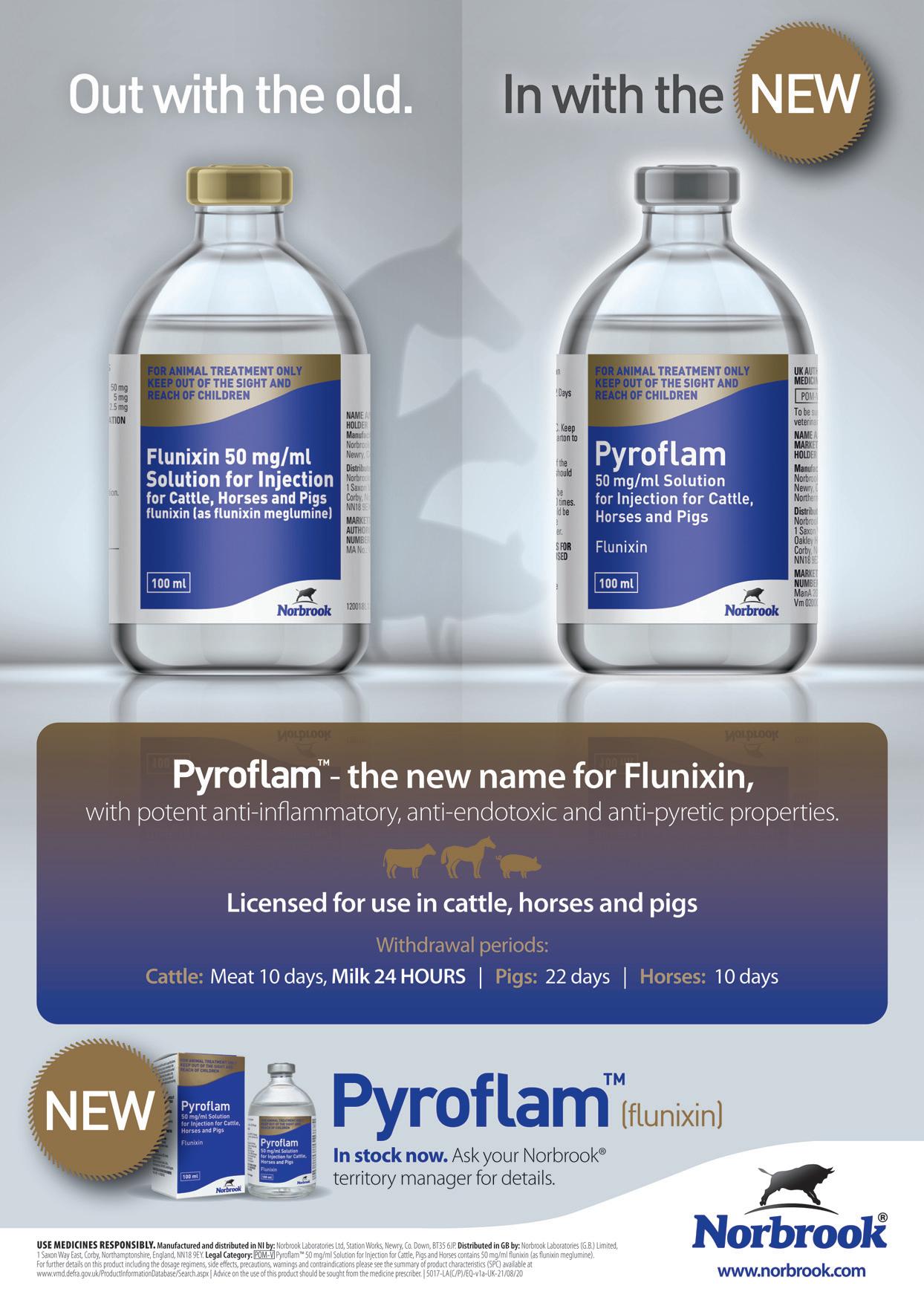
3 minute read
The Vet
The VET When is your cow going to calve? When does your vet eat his lunch?
help reduce costs and increase outputs from their 1,000 Lleyn and Highlander cross breeding ewes and 150 Stabiliser suckler cows.
Advertisement
“I heard Michael Blanche speak at a QMS event about the benefts of rotational grazing and decided to go home and give it a try.”
Prior to rotationally grazing, ewes were heavily set stocked on in-bye land during the winter which David states had a knockon effect on grass growth in spring.
“I previously put poorquality pasture growth down to our location and climate, but once we started rotating stock in winter and resting paddocks from the turn of the year, swards started to develop two to three weeks earlier.”
David, who was part of QMS’ successful Graze + project, has since signed up alongside eight other Scottish farmers to be part of the GrassCheckGB programme – which aims to look at new grassland technologies and techniques.
“I decided to get involved with GrassCheckGB to help improve my weakness when it came to measuring grass. I would occasionally measure some of the paddocks but wasn’t making best use of practice.
“The programme has given me a bigger incentive to measure grass accurately and has allowed me to expand my network with farmers across the UK, reporting on the factors that infuence pasture growth and quality,
To the first question the obvious answer is 9months after she was bulled. But do you know when she was bulled? or just when the bull went in with the cows. That’s often the case with beef herds. Where AI is used it becomes slightly clearer, but did she hold to that or was a sweeper bull involved too?
So we’ll get her scanned which can be pretty accurate up to the first 3 months but becomes more of an “art” after that. Many of our cows just get scanned when they come in which can be 5 months after the bull went in.
So say we’ve got our date will she go over go over her time? Many do, and by 2-4 weeks sometimes so we’re still left not sure. We can use EBV and chose short gestation lengths - that might help.
So at best we might get within a couple of weeks of being fairly certain and then it’s down to observation of making up and slackening down. So now we’re down to a matter of days perhaps. But when? Morning, noon or night? By Andy Cant Northvet Veterinary Group

There are various factors that affect the time of day a cow will calve: feeding, physical activity, daily rhythmic hormone secretion, ambient temperature, light/dark, weather etc etc
Time of feeding is that one that gets a lot of press, but how does that influence time of calving? A couple of theories: Its known that a cows body temp will reduce in the 12hrs before calving and often the falling night time ambient temperature helps that. If an animal is fed at night (1600-1800hrs) the metabolic heat load produced by digestion can offset that precalving maternal body temperature decline and keep the temperature maintained, so delaying calving. Also rumenal contractions are known to decrease prior to calving. The stimulus of food intake and pressure in the rumen, increases rumenal contractions, so again is likely to delay calving as is the general activity involved.
So is it true? Does it work?
(Graph 1) Here is calving times from one of our clients herds who got fed up of being up all night with nothing happening during the day so he feeds at 17.00hrs
So sorry I don’t have figures from before he changed but he is pleased that the bulk of his cows now calve at more sociable hours. (Graph 2) Here at the practice we always think we attend more calving’s out of hours than during the day. So I thought I would check that out and looked at what we did in March 2020.
Wrong! Well I didn’t expect that! Most of our call outs for calvings are in the afternoon. (I’ll need to check a bigger sample!)
So this adds another aspect to the whole theory of cows feeding delaying calving. Could it be that, actually, calving problems are brought on, depending on when the vet eats his lunch?!
(Graph 1)


(Graph 2)












